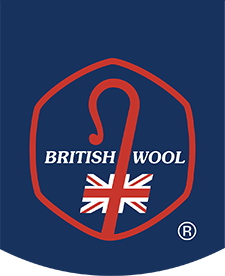The History of Wool in the UK
Over the next two issues of Graze we are going to look at the history of the British wool industry and within next month’s issue the part British Wool has played. We are all passionate about sheep, but do we really know how the UK flock has evolved?
Sheep have grazed in Britain, providing wool - one of our greatest natural resources - for thousands of years and, although in the last 50 years both sheep farming and the wool textile industry in the UK have shrunk considerably, their strong roots remain.
In Britain, spinning and weaving are thought to have developed around 1900BC. The native sheep at that time were descended from a small, long-legged breed, similar to a Soay, developed from the wild sheep of Northern Europe.
The Britons had already established a wool industry when the Romans invaded in 55 BC, bringing with them sheep that were larger and had finer, white wool. The time was ripe for further industrial development.
The Romans left their imported sheep to breed with native British flocks and when, later, the Vikings arrived they brought their own breeds of black-faced, horned sheep, which became ancestors of today’s Blackface, Swaledale and Herdwick.
And so, from these three groups of primitive breeds began to evolve the many diverse breeds and crosses which make the British Wool clip so unique.
Wool quality was the main criteria used in any breeding programmes until the 18th century. It was only after the Industrial Revolution, when British agriculture had to produce more food to meet the demands of the growing industrial communities, that breeding for meat took precedence.
The work of Robert Bakewell to develop pedigree livestock breeding, was to prove very influential in Britain and overseas.
Concentrating primarily on meat production, his aim was to produce early maturing animals which would give more profit through a quicker turnover. By making careful stock selection from the old Leicester Longwool, he developed what was first known as the Dishley and, later, the New Leicester. Many breeds, including the Border Leicester, Lincoln, Wensleydale, Devon Longwool and Dartmoor, evolved from Dishley stock.
Using the same principles of selection, Robert Ellman, who lived in Sussex, developed a local short-woolled heath sheep, which became the Southdown.
As well as producing very satisfactory meat, the Southdown became a popular crossing sire of the time. Since those days the process of improving and refining British sheep breeds, to meet the consumer’s changing tastes and preferences for the table, has continued to the present day.


